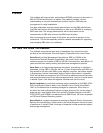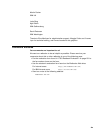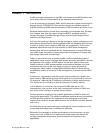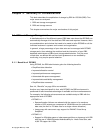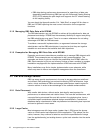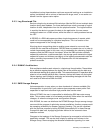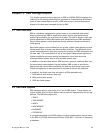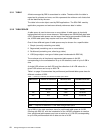
© Copyright IBM Corp. 1999 5
Chapter 2. Summary of Considerations
This book describes the exploitation of storage by DB2 for OS/390 (DB2). Two
major areas are analyzed:
1. DB2 and storage management
2. DB2 and storage servers
This chapter summarizes the major conclusions of this project.
2.1 DB2 and Storage Management
A detailed analysis of the different types of DB2 data sets shows that DFSMS can
automatically manage all of the data sets DB2 uses and requires. However, there
are considerations and choices that need to be made to tailor DFSMS to suit the
individual customer’s systems environment and organization.
In general, a large percentage of your data sets can be managed with DFSMS
storage pools, thus reducing the workload and the interaction of your DB2
database administrators (DBAs) and storage administrators. Only the most
critical data, as defined with service level agreements or as revealed by
monitoring, may require special attention.
2.1.1 Benefits of DFSMS
Using DFSMS, the DB2 administrator gains the following benefits:
• Simplified data allocation
• Improved allocation control
• Improved performance management
• Automated disk space management
• Improved data availability management
• Simplified data movement
See 4.4, “Benefits” on page 32 for more details.
Another very important benefit is that, with DFSMS, the DB2 environment is
positioned to take immediate advantage of available and future enhancements.
For example, the following enhancements are available today to DB2 with the
appropriate level of DFSMS:
•DFSMS1.4
• Space allocation failures are reduced with the support of a maximum
number of 255 extents per component of VSAM data set for multivolume
data sets (the limit is 123 data sets for a single volume allocation).
• Image copy with concurrent copy support for RAMAC Virtual Array
SnapShot.
•DFSMS1.5
• Support for 254 table space or index space partitions or pieces up to 64 GB
with the use of VSAM Extended Addressability for Linear Data Sets; also
4,000 TB support for LOBs.



